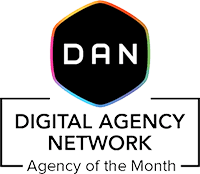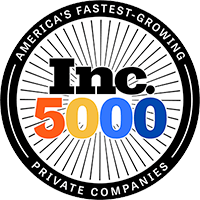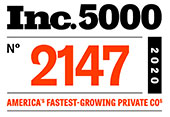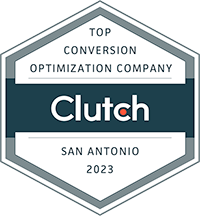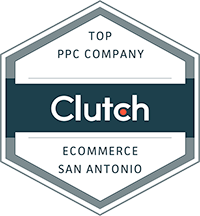General Questions
A monthly retainer can include one or multiple services. Each channel managed has a range between $3500-6500+ depending on the level of effort involved. The typical contract is ongoing month-to-month after the first sixty days. We do not have long-term/annual contracts or charge on a percent of media spend. We only offer one-time projects to existing clients.
The typical team includes an account strategist and an expert for each channel. Whenever possible we try to match individual team members with industries they are experienced in. In most cases, you can meet the team that would work directly on your account before hiring us. The typical channel manager has 10+ years of experience with no one less than 5 years. Every team member you will interface with lives in the United States and speaks English as their first language.
Yes, you can absolutely do that. This can be a good way to start the relationship.
It is helpful if you let us know how much time is left on the contract so we can resource plan accordingly. The earlier you contact us the better. Yes, we can make the transition as smooth as possible.
Our typical point of contact has the title of VP/Director of Ecom/Marketing. In most cases, your team should include a copywriter to speak in your brand's voice, a designer to match your brand's aesthetics and a website developer to implement changes.
We are looking for clients that are trying to grow and want a partner they can trust and will listen to. You and your team should have a good handle on brand, clear company direction and a product that is marketplace/category competitive. Unfortunately, we cannot accept startups pre-revenue or those under a few million in annual revenue.
Yes, we have clients that would be happy to speak with you.
The typical client sees results within the first 30 days, but we have to tell you 60 days. More importantly, you should be able to feel the difference immediately. We call this the Action-Results Gap; the time between taking action and seeing results.
Any agency that offers a money back guarantee isn't interested in the relationship. They are just hoping to mass onboard new clients, see which stick and then drop those that don't work after six months. We take on each new client with a considerable amount of care - overinvesting time, energy and resources to make sure they are successful. Transparently, we usually operate at a deficit for the first year of any new engagement. What can we promise you? That our team will consistently show up to the best of their ability. That you will get the truth about what is working and not working, even if it is not to our benefit. We can't use the word fiduciary, but we try to act this way. We are never commissioned on any technology or recommendation we make, which allows us to maintain integrity, operate transparently and only suggest what is best.
Our typical cadence is a weekly/bi-weekly phone call with email in between calls. One these calls we discuss performance, coordination of key events, overall strategy and next steps. We have both weekly and monthly automated reports delivered by email for revenue/lead and budget pacing.
No. You already pay us for our service, so we do not double dip. In fact, whenever we can pass along what would be our commission, we ask that tech partner to discount your monthly fee instead. This allows us to transparently recommend what we think is best. If a better solution comes along, we also reserve the right to change our mind.
Google Ads
We measure Google Ads success through increased conversions, revenue and ROAS. We measure using multiple sources of attribution including in-platform data, Google Analytics as well as other third party tools. We also budget based on business level metrics like MER.
During the first 30 days, we set up monitoring, perform our Google Ads scorecard check and identify the lowest hanging fruit opportunities. This usually takes the form of pausing, optimizing or launching new campaigns. Although these activities are ongoing, we also attempt to resolve tracking, product feed and Google Merchant Center errors. From there we install budget trackers and reporting, and then determine next steps to improve overall performance.
Our philosophy for Google Ads is to "efficiently capture demand" for people searching for your brand or products. Organic alone typically captures 50% of your brand's demand, but with Paid and Organic combined you capture approximately 70% of your brand's demand. This incremental 40% improvement in transactions helps make your other marketing initiatives more efficient. Then we target non-brand search and shopping opportunities based on budgets and goals.
For most clients, we will run a combination of Search and Performance Max (Search, Shopping & Display) campaigns.
With consideration to seasonality and your marketing calendar, we'll discuss monthly budgets and then align on revenue and ROAS targets. In addition to this, we'll have a plan for scaling up if we are pacing ahead of plan and contingencies for if we are below revenue or ROAS targets.
Yes, we can help with creating and managing the product feed along with Google Merchant Center. We recommend Data Feed Watch. For a full managed solution, many of our clients also use Feedonomics.
Facebook Ads
Yes, we can absolutely help your creative and design team. This starts with ideating on creative concepts that feel on brand, then creating variations in imagery and messaging to test. Then after running the tests and discussing the findings, we will propose future iterations to build on past success.
Yes, we can help with audience research. Typically what we find works best is broad audience and custom list targeting. This can then be layered in with interest-based and lookalike audiences (LAL). Please note that Meta has restricted interest-based targeting and it has become less important.
For most clients, we will run a combination of Feed, Stories and Advantage+ placements on both Facebook and Instagram. For creative, we will run a combination of single image, video, lead, carousel and dynamic product ads (DPAs).
With consideration to seasonality and your marketing calendar, we'll discuss monthly budgets and then align on revenue and ROAS targets. In addition to this, we'll have a plan for scaling up if we are pacing ahead of plan and contingencies for if we are below revenue or ROAS targets.
Yes, we can help with creating and managing the product feed. We recommend Data Feed Watch, Flexify and the Shopify API. For a full managed solution, many of our clients also use Feedonomics.
Yes, you should have a person that manages creative asset production, graphic design, video production (if needed) and copywriting. We are happy to propose copy ideas, but ultimately to save on approval time we ask that your team provide on brand assets and copy. We will provide the specs, dimensions, examples and what works well.
SEO
Our SEO approach prioritizes your brand first. Unlike other SEO agencies that use exotic methods that no one understands, we try to keep it simple and focus on the big picture. We emphasize onsite and technical SEO as a holistic part of your full digital marketing strategy. Content writing and blogging is not a large part of our SEO strategy.
During the first 30 days, we set up monitoring, perform our SEO scorecard check, resolve broken links, optimize Google Analytics and Search Console, conduct preliminary keyword research and start technical error clean up. This framework drives the activities and overall strategy for the coming months.
We measure SEO success through increased organic traffic, improved keyword visibility and decreased onsite technical errors. Our philosophy for SEO is "minimum effective dose". Most likely, you do not need to do backlinking, instead allocate the marketing budget to opportunities with higher returns that build the brand. Regular reporting and analytics tracking provide transparent insights into overall performance.
Yes, we can help with keyword research and information architecture. Note that we do not provide content writing or blogging services.
Yes, we can help claim and optimize your local Google Business Profile (formerly Google My Business).
Yes, you should have a website development team to assist with some, but not all code changes. These include making the website faster, fixing theme templates and one-off bugs.
CRO
The first 30 days will involve an implementation of an A/B testing tool that will host the experiments. We can use your current tool or recommend one that works for your needs. As we onboard, an audit will take place. Unlike most strategic partners, we treat conversion holistically. Instead of hyperfixating on button colors or CTA's, we understand that to identify CRO patterns, we must also evaluate trends in traffic quality, promotion frequency and creative. By day 30, we will be regularly referencing a roadmap that will outline testing plans and our first 1-2 tests will be active.
To measure A/B testing results, we define key metrics aligned with your objectives and confirm statistical significance to validate findings. Then, we analyze quantitative data using tools like Google Analytics and gather qualitative feedback for deeper insights into user behavior. We segment audiences to understand diverse responses and iterate based on winning variations to continuously optimize webpage performance.
Yes. Developers implement the necessary tracking codes and tools required to conduct the tests effectively, ensuring accurate data collection and analysis. They also take part in creating and deploying variations of web pages without causing technical issues. Lastly, they help deploy winning variations to live themes.
1. ROAS (Return On Ad Spend) focuses on revenue generated relative to advertising costs. 2. Incrementality measures the additional revenue directly attributable to advertising efforts. 3. Profit margin indicates the percentage of revenue retained as profit after deducting all costs. By lifting the conversion rate, ad dollars become more efficient and revenue is generated at a lower cost, thus increasing profit margin.
A good ecommerce conversion rate typically varies depending on the industry, product type, and several other factors. However, a conversion rate of around 2% to 5% is often considered decent, though some industries or well-optimized sites can achieve much higher rates. Conversion Rate Optimization should be seen as an evergreen objective as opposed to a patch or quick-fix as a contributing factors evolve alongside brands as they age and grow.
As you plan for CRO, you will need an A/B testing tool, a developer, an experiment designer and a fresh perspective.

